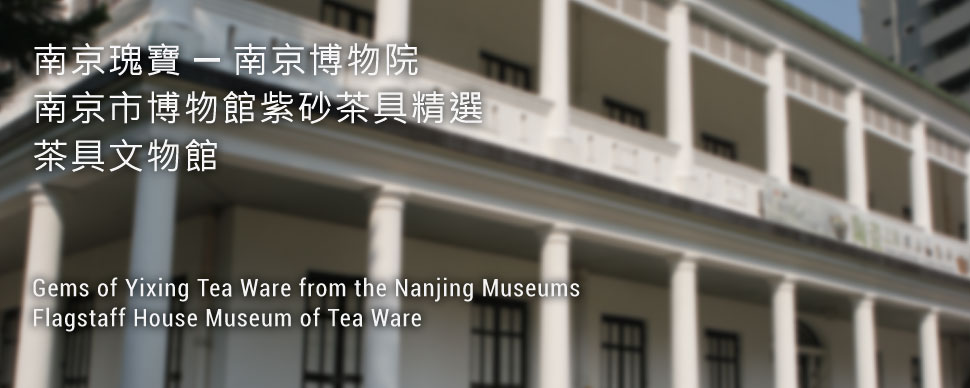Art Event
Page : International Museum Day 2014
Gems of Yixing Tea Ware from the Nanjing Museums - Flagstaff House Museum of Tea Ware
15/05/2014

17.05.2014 to 18.05.2014
Flagstaff House Museum of Tea Ware
Free
Admiralty
Heritage
All people
| Gems of Yixing Tea Ware from the Nanjing Museums - Flagstaff House Museum of Tea Ware | |
| Flagstaff House Museum of Tea Ware (G/F) The Nanjing Museum is renowned for her collection of ancient Yixing tea wares. This exhibition features collections from the Nanjing Museum spanning from the Ming and Qing dynasties to the present day. The exhibition also includes the loan of the earliest datable Yixing teapot in the world – persimmon-pedicel-patterned teapot with an overhead handle discovered from Wu Jing's grave, a Ming tomb and collected in the Nanjing City Museum. This teapot is the earliest piece of excavated purple clay ware which provides us with rare object information. Purple clay ware, which dates back to the Song dynasty, was very popular during the Ming and Qing dynasties. Since the middle period of the Ming dynasty, purple clay ware making has gradually become a form of art which combines pottery making, poetry writing, calligraphy, painting, seal carving and sculpture. Purple clay ware gained prevalence and matured in the Ming dynasty. Renowned artisans from this period were numerous. In the Qing dynasty, purple clay ware making was elevated to a higher level. One famous Qing potter was Chen Mingyuan from the Kangxi reign (1662 – 1722). By the Jiaqing reign in the Qing dynasty (1796 – 1820), another craft master emerged. Yang Pengnian was a maker of elegant and delicate teapots. Appreciating Yang's talent, county magistrate Chen Mansheng came to Yixing to produce teapots with him, these teapots are known as "Man Sheng Teapots" and have been highly rated by connoisseurs. In addition to masterpieces from the Ming and Qing dynasties, there are also teapots by famous 20th century makers, including Wang Yinchun, Pei Shimin, Gu Jingzhou, Zhu Kexin and Jiang Rong etc. Progressing from the foundation laid by Ming and Qing craft masters, they came up with a wide range of works rich in individual character and contemporary appeal. To ensure visitors of all ages can enjoy a wonderful experience of purple clay art, education corners and various interactive games have been set up in the gallery to cater the need of different audiences. |
|
|
About the Museum Specialising in the collection, study and display of tea ware, the branch museum at Flagstaff House features at its core the generous donations of Dr K.S. Lo (1910-1995) , which include many fine examples of the famous Yixing teapots. Built in the 1840s, Flagstaff House originally served as the office and residence of the Commander of the British Forces in Hong Kong. It was converted to the Museum of Tea Ware in 1984, with a new wing, The K.S. Lo Gallery, added in 1995. Alongside its exhibitions, the Museum holds regular demonstrations, tea gatherings and lecture programmes to promote ceramic art and Chinese tea drinking culture. |
|
|
|
How to get there?
Flagstaff House Museum of Tea Ware
10 Cotton Tree Drive, Central,
Hong Kong (inside Hong Kong Park)
Flagstaff House Museum of Tea Ware
10 Cotton Tree Drive, Central,
Hong Kong (inside Hong Kong Park)
| Source: Hong Kong Museum of Art - Flagstaff House Museum of Tea Ware hk.art.museum |





















